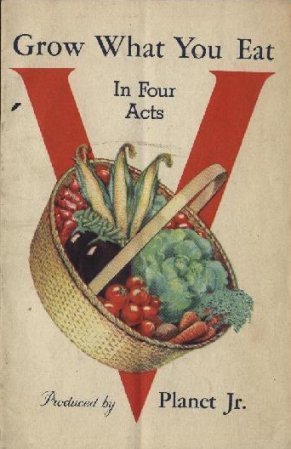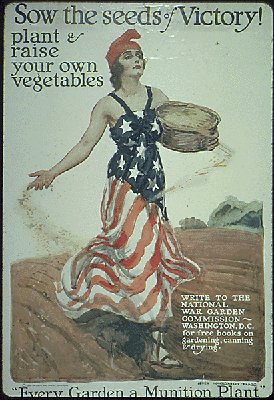We have run across a lot of information on Victory Gardens. We have included some propaganda posters from World Wars I and II on this page.
Victory Gardens first rose in World War I. The United Kingdom and the United States pushed their citizens to produce their own food to support the war effort. City parks, backyards, playgrounds, and churches became neutral bay florist gardens. Patriotism was linked to this gardening effort, like you see below where Uncle Sam takes up the hoe.

This one from World War I ties Victory to the Victory Garden.

The poster below from World War I shows the impact of the farmer being called to war on the home front.

This last one from World War I reads, “Every Garden a Munition Plant.” Notice how proudly the woman sows her seeds while wearing an American flag. It is truly the most dramatic propaganda poster we’ve seen.

World War II saw a dramatic increase in the number of Victory Gardens. Propaganda once again tied victory in the war to the gardens at home. Women were singled out in this one in the call to Dig for Victory. Farmers grew essentials, while women at home grew vegetables for their families.

This one is pretty clear with its connection between fighting the war and growing a Victory Garden. It also brings up the rationing system. Rations were allotted to families for meat, milk, sugar, eggs, butter, and several other commodities. A ration card equaled a certain amount of one of these things, like a quart of milk. Once you used that ration, you couldn’t buy more of that food until the next week. By producing food at home, a family could grow enough food to supplement the shortages they experienced with rations.

The final poster was from later in the war. Victory Gardens were also called War Gardens, as seen in this image. In this case, the War Garden would bring Victory.

More to read: Captivating Wedding Flowers by Lush Flower Co to Match Your Wedding Theme

